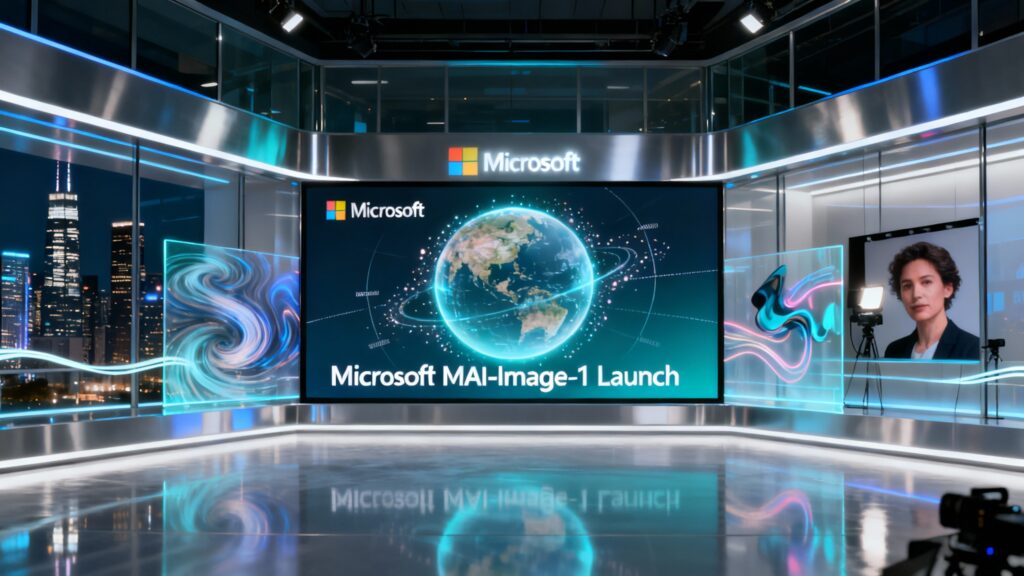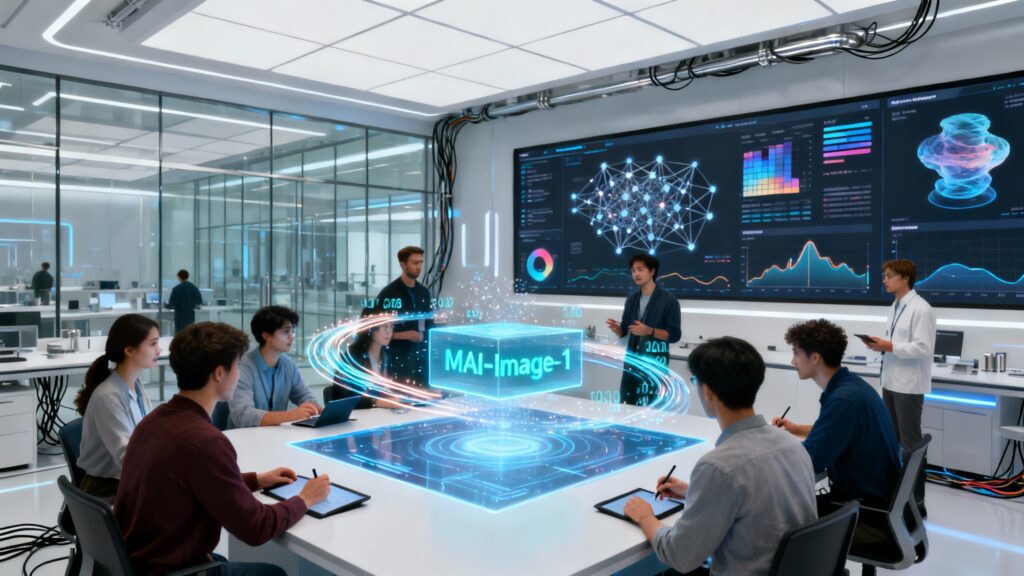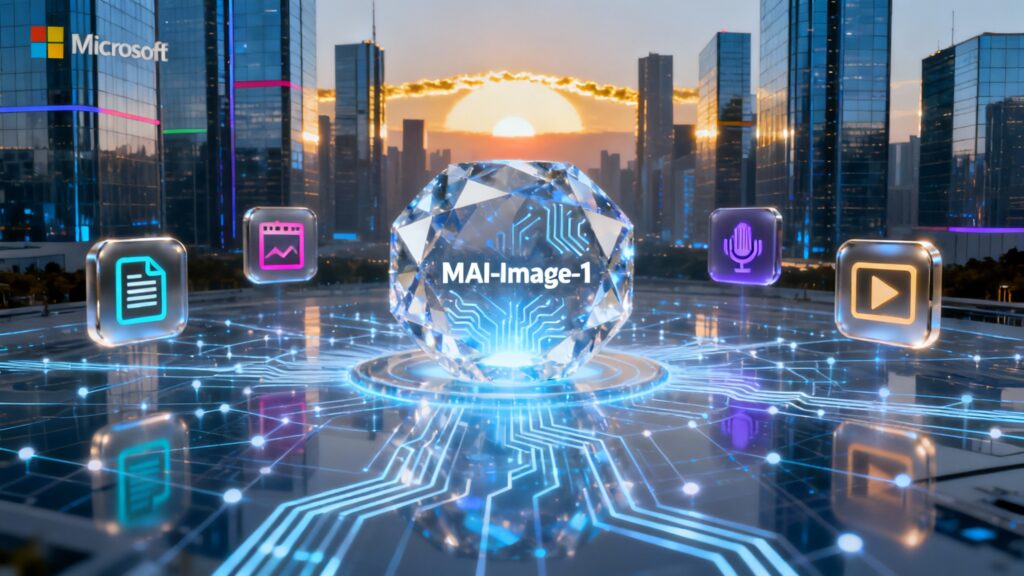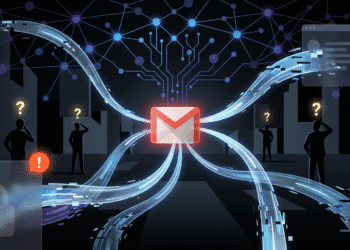
Microsoft just dropped a bombshell in the AI world. The company’s brand-new image generator, MAI-Image-1, isn’t just another AI tool—it’s Microsoft’s first completely homegrown text-to-image model. And it’s already turning heads.
On October 13, 2025, Microsoft AI announced that MAI-Image-1 has secured a coveted spot in the top 10 on LMArena’s leaderboard. That’s the benchmark where real humans pit AI models against each other and vote for the winner. For a debut model to crack that list? That’s impressive.
This launch marks a pivotal moment. Microsoft is no longer just the company that bankrolled OpenAI or resold other people’s AI tech. They’re building their own arsenal. And MAI-Image-1 is proof they mean business.
Breaking Free from the OpenAI Shadow
Here’s the thing: Microsoft and OpenAI have had a complicated relationship. Microsoft poured billions into OpenAI, becoming its biggest backer and exclusive cloud provider. But lately, things have gotten messy.
The Verge reports that Microsoft has started using Anthropic’s AI models in some Microsoft 365 features. That’s a big deal. It signals Microsoft is diversifying away from OpenAI dependence.
Salesforce CEO Marc Benioff even predicted Microsoft would eventually stop using OpenAI tech across its products. He famously called Microsoft an “OpenAI reseller” and compared Copilot to the infamous Clippy assistant. Ouch.
But with MAI-Image-1, Microsoft is proving Benioff might be onto something. The company is building its own models. And they’re competitive right out of the gate.
What Makes MAI-Image-1 Special?
So what’s the big deal about this new image generator? According to Microsoft’s official announcement, MAI-Image-1 was designed with creators in mind. Not just casual users making memes. We’re talking professionals.
The model excels at photorealistic imagery. Think lightning strikes, detailed landscapes, complex lighting scenarios with bounce light and reflections. The kind of stuff that separates amateur AI art from professional-grade visuals.
Speed is another selling point. Microsoft claims MAI-Image-1 processes requests and generates images faster than many larger, slower models. That’s crucial for professionals who need to iterate quickly. You can visualize an idea, tweak it, and move on—all without waiting around.
Heise reports that Microsoft prioritized avoiding repetitive outputs and generic styles. They didn’t want every image looking like it came from the same cookie-cutter template. To achieve this, they used rigorous data selection and brought in feedback from creative industry professionals during development.
The Numbers Don’t Lie
Let’s talk rankings. On the LMArena text-to-image leaderboard, MAI-Image-1 scored 1,096 points, landing at #9. That puts it ahead of OpenAI’s DALL-E and Stable Diffusion—two models that have dominated the space for years.
For context, Dataconomy notes that Google’s Gemini 2.5 Flash (nicknamed “Nano Banana”) sits at #2 with 1,154 points. OpenAI’s model ranks #7 with 1,123 points. The current leader is Hunyuan-image-3.0 from Chinese tech company Hunyuan.
The fact that Microsoft’s first in-house image model is already competing with—and beating—established players? That’s not just impressive. It’s a statement.
How Microsoft Built It

Microsoft didn’t just throw data at a neural network and hope for the best. They took a methodical approach.
According to The Decoder, the development team emphasized strict data selection. They wanted to avoid the pitfalls that plague other AI image generators: repetitive styles, generic outputs, and images that all look vaguely similar.
They also incorporated feedback from professionals in creative industries. Designers, artists, photographers—people who actually use these tools for real work. This real-world input helped shape the model’s capabilities and ensure it delivers practical value, not just flashy demos.
The result is a model designed for flexibility and visual diversity. Whether you need a photorealistic landscape, a complex lighting setup, or detailed textures, MAI-Image-1 aims to deliver.
Where You Can Try It
Right now, MAI-Image-1 is available for testing on LMArena. That’s the platform where users can compare different AI models side-by-side and vote on which produces better results.
But Microsoft isn’t stopping there. The company announced that MAI-Image-1 will soon be integrated into Copilot and Bing Image Creator. That means millions of users will have access to this technology directly within Microsoft’s ecosystem.
This integration is strategic. By embedding MAI-Image-1 into products people already use, Microsoft gains control over the entire experience. They’re not dependent on third-party APIs or licensing agreements. They own the stack.
Part of a Bigger AI Strategy
MAI-Image-1 isn’t Microsoft’s first rodeo with in-house AI models. Earlier this year, the company launched MAI-Voice-1, a speech synthesis model that can generate up to one minute of audio in just one second. They also released MAI-1-preview, a chatbot that represents the future version of Copilot.
Windows Central reports that Microsoft AI CEO Mustafa Suleyman has been vocal about the company’s long-term vision. He’s talked about an “enormous five-year roadmap” for AI development, with substantial quarterly investments aimed at building world-class frontier models in-house.
Suleyman’s philosophy? Microsoft should have the capacity to build top-tier models of all sizes internally. But they should also be pragmatic and use other models where it makes sense. It’s about flexibility, not ideology.
This approach makes sense. Microsoft isn’t abandoning partnerships. They’re just making sure they’re not completely dependent on any single provider.
The OpenAI Relationship Gets Complicated
Speaking of partnerships, let’s address the elephant in the room: OpenAI.
Microsoft was an early funder of OpenAI, pouring billions into the company and providing the cloud infrastructure for training models like GPT-4. For years, Microsoft had exclusive rights to OpenAI’s technology.
But cracks have appeared. OpenAI announced its $500 billion Stargate project to build data centers across the United States. As part of that initiative, Microsoft lost its exclusive cloud provider status. They still have right of refusal, but the exclusivity is gone.
PetaPixel notes that the relationship has grown “increasingly complicated.” There have been reports of disputes over OpenAI’s plans to become a for-profit company and how Microsoft’s investments should be valued in that transition.
OpenAI has also complained that Microsoft doesn’t meet its cloud computing needs. They’ve sought additional resources beyond what Microsoft provides, raising concerns about whether a rival AI lab might achieve artificial general intelligence (AGI) first.
Microsoft, for its part, reportedly backed out of two major data center deals because it didn’t want to provide additional training support for ChatGPT. The message is clear: Microsoft is prioritizing its own AI development.
What This Means for Creators
For creative professionals, MAI-Image-1 represents a new option in an increasingly crowded field.
The model’s emphasis on photorealism and lighting accuracy could make it particularly useful for industries like advertising, design, and digital content creation. The ability to rapidly iterate through concepts and export results to other tools fits naturally into existing workflows.
MarkTechPost highlights that the model’s speed-quality balance is designed for interactive use, not just batch rendering. That means you can work with it in real-time, adjusting prompts and seeing results almost instantly.
Microsoft also emphasizes safety and responsible AI. They’re testing the model publicly on LMArena specifically to gather feedback and insights before rolling it out more broadly. This cautious approach suggests they’re taking concerns about AI-generated content seriously.
The Competitive Landscape
The AI image generation space is heating up. OpenAI’s DALL-E went viral for its ability to mimic styles like Studio Ghibli. Google’s Nano Banana set new benchmarks with powerful editing capabilities. Midjourney has built a devoted following among artists and designers.
Now Microsoft is entering the arena with its own contender. And unlike some competitors, Microsoft has massive distribution advantages. Copilot is integrated across Windows, Microsoft 365, and Bing. That’s billions of potential users.
If MAI-Image-1 delivers on its promises—photorealistic quality, fast generation, diverse outputs—it could quickly become a default choice for millions of people who already live in Microsoft’s ecosystem.
Technical Details and Architecture

Microsoft hasn’t disclosed all the technical details about MAI-Image-1 yet. We don’t know the parameter count, the specific architecture, or the full training dataset.
What we do know is that the model was designed for consumer-grade interactive use. That suggests tight optimization for latency and throughput. It’s built to respond quickly to prompts, not to spend hours rendering a single perfect image.
The emphasis on avoiding style collapse—where all outputs start looking similar—indicates sophisticated training techniques. Microsoft likely used diverse datasets and careful curation to ensure the model can handle a wide range of styles and subjects.
Safety guardrails are also baked in. Microsoft has committed to “safe and responsible outcomes,” which likely means content filters, watermarking, and other measures to prevent misuse.
What’s Next?
Microsoft’s AI ambitions don’t stop with MAI-Image-1. The company is investing heavily in building its own chip clusters to reduce dependence on Nvidia GPUs. They’re developing models across multiple modalities: text, image, voice, and video.
The integration of MAI-Image-1 into Copilot and Bing Image Creator is just the beginning. As the model matures and Microsoft gathers user feedback, we can expect improvements and new features.
There’s also the question of how this affects Microsoft’s relationship with OpenAI. Will Microsoft continue using DALL-E technology, or will MAI-Image-1 replace it entirely? Time will tell.
One thing is certain: Microsoft is no longer content to be just an “OpenAI reseller.” They’re building their own AI future. And with MAI-Image-1 cracking the top 10 on its first try, that future looks promising.
The Bottom Line
MAI-Image-1 represents more than just a new AI image generator. It’s a declaration of independence. Microsoft is proving it can compete with the best in the business using its own technology.
For users, this means more choices and potentially better integration across Microsoft products. For the industry, it signals that the AI landscape is becoming more competitive and diverse.
The model’s strong debut on LMArena shows that Microsoft’s investment in in-house AI development is paying off. Whether MAI-Image-1 becomes a household name like DALL-E or Midjourney remains to be seen. But one thing is clear: Microsoft is serious about AI. And they’re just getting started.
Sources
- Microsoft AI – Introducing MAI-Image-1, debuting in the top 10 on LMArena
- The Verge – Microsoft AI announces first image generator created in-house
- The Decoder – Microsoft launches its first in-house image generation model, MAI-Image-1
- Heise – MAI-Image-1: Microsoft’s First Own Image Generator
- Blaze Trends – Microsoft Launches MAI-Image-1 In-House AI Generator
- PC Mag – Microsoft unveils its first homegrown AI image generator
- Windows Central – Microsoft unveils first custom image generator, MAI-Image-1
- MarkTechPost – Microsoft AI Debuts MAI-Image-1
- PetaPixel – Microsoft’s Says Its First AI Image Generator Delivers Excellent Photorealism
- Dataconomy – MAI-Image-1 Marks Microsoft’s Debut As A Standalone AI Image Creator
- Tom’s Guide – Microsoft debuts MAI-Image-1, its first in-house AI image generator










Comments 1